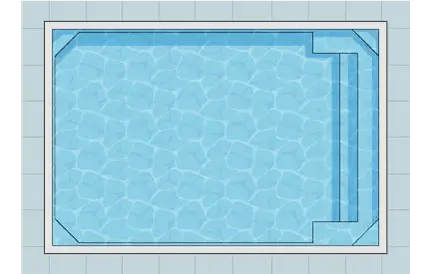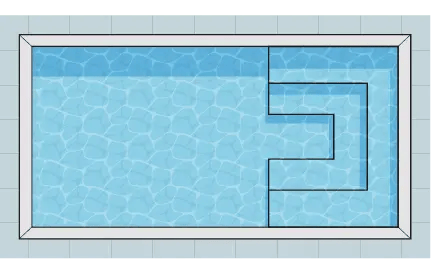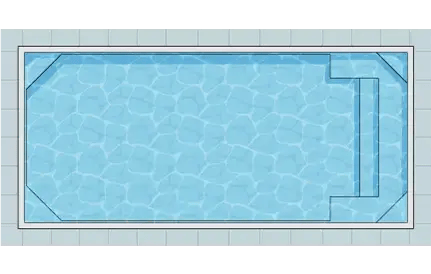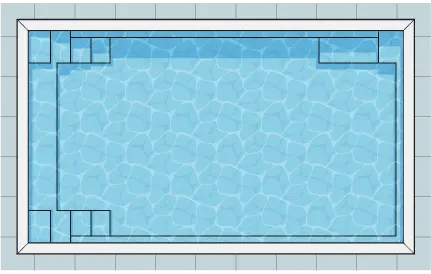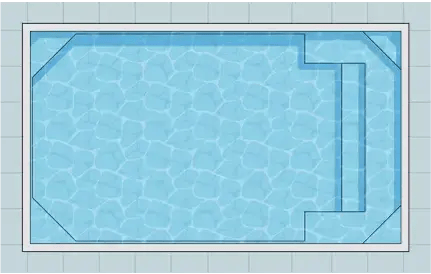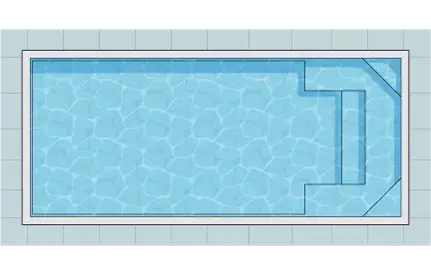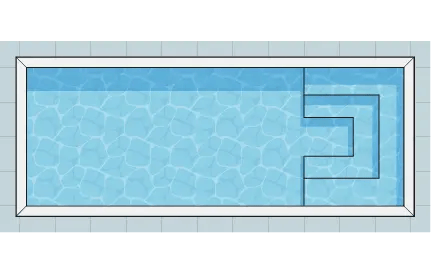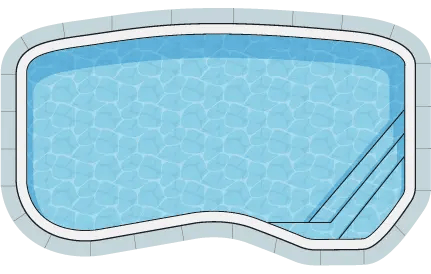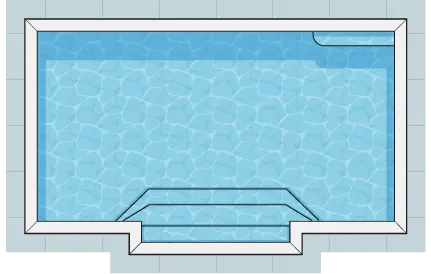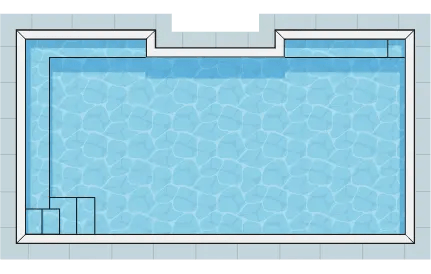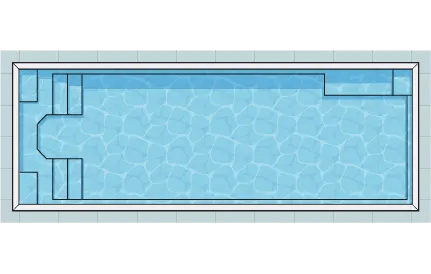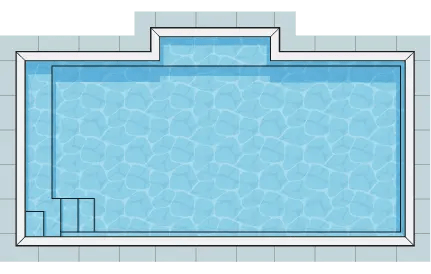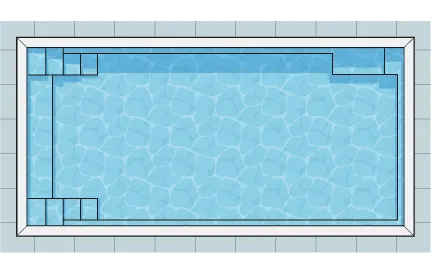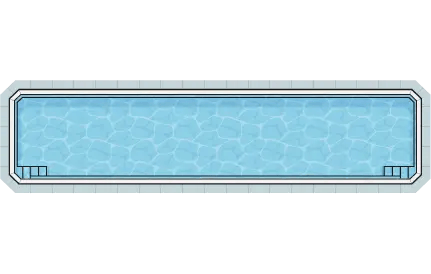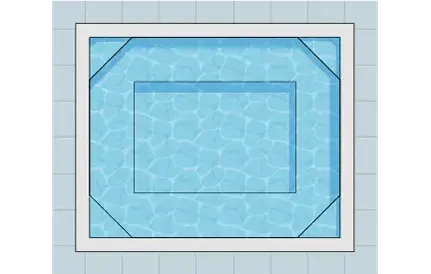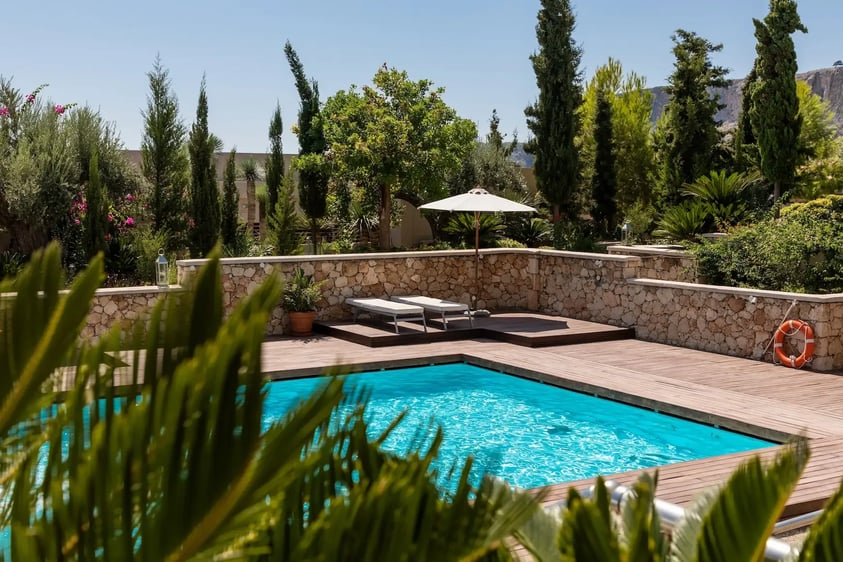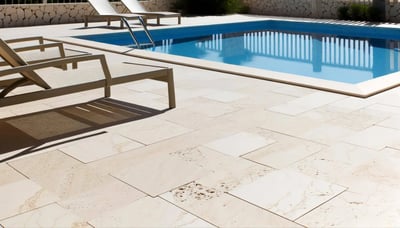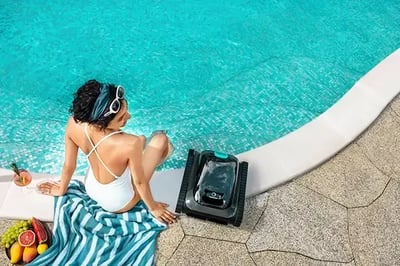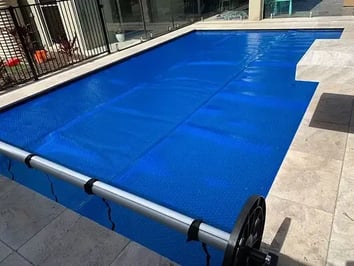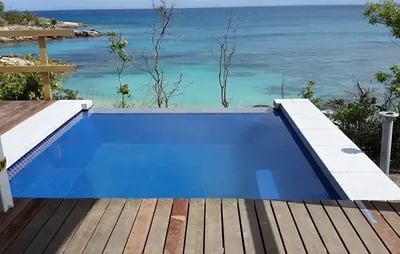Since swimming pools are an expensive, long-term investment, it’s important to take into account the pros and cons of both options. Choosing the right material for your pool is one of the most important decisions you have to make when buying a pool.
When comparing fibreglass vs concrete pools, it's important to review all the considerations to see which is better for your backyard space. Which one you will choose will depend on various factors so we'll take a look at the pros and cons of each.
Pool size and shape
When it comes to the design and appearance of your pool, one of the most important decisions to consider concerns the shape and size of your pool. Do you want an inground lap pool or a plunge pool? Is your terrain sloped and difficult to excavate? Do you have unique design considerations? Can a crane access your property?
Because they are built onsite, concrete pools are extremely versatile and are often the result of custom specifications and requirements and unique pool design.
The most significant consideration you should know about fibreglass pools is their shape and size. Fibreglass swimming pools are prebuilt in a factory rather than onsite, so you aTre restricted to the existing fibreglass pool shell. Also, because they have to be carried by road to the building site, they are restricted in size as well – the biggest fibreglass pool we have is a 13.5m x 3m lap pool.
Pro Tip:
If you have a specific space such as wrapping around a house, a concrete custom pool might be better for you. But rest assured that even though fibreglass cannot be custom-built unless you have very unique requirements, there is a wide range of styles and shapes to choose from.
Design and appearance
When it comes to the design and appearance of your pool, both concrete and fibreglass offer versatile, aesthetically pleasing options.
Long are the days when fibreglass pools were only available in a handful of colours. Nowadays, the gelcoat on modern fibreglass swimming pools comes in an array of colours and shimmer effects that can suit your home and garden.
But if you want a unique design or colour, concrete pools offer unlimited options. There is also a wide variety of surfacing options to choose from, such as pebble or tile.
Pro Tip:
When it comes to design and aesthetics, both types of pools can achieve a beautiful look. While concrete can be architecturally designed to inject your personality into the landscape, modern fibreglass pools have a wide range of popular designs that fit well in most Australian backyards. So when choosing, it depends on your site requirements and preferred aesthetics.
Installation time
When it comes to installation time, once you have all your permits and are ready to build it takes:
• 1-3 weeks to install a fibreglass swimming pool
• Up to 3 months to install a concrete pool
If you want to save money on your fibreglass pool installation, you can choose a company that allows you to opt for a DIY kit which usually includes the pool shell and delivery cost. This can save you thousands of dollars, because you have the option to self-install or to hire a local, independent contractor – as opposed to being locked in a contract with an overpriced company.
Concrete pools are not “installed,” they are built onsite. That means that the pool will be done by a pool company and will typically cost 20% more to install than a fibreglass one.
Pro Tip:
When deciding, you need to take into account that after installation, a concrete pool typically needs to cure for about a month before it can be used. So if you are looking for a quick dip straight away, then fibreglass might be a better option. When it comes to a fibreglass pool shell, it can be more difficult to install because it needs a crane to access the site to offload and must be extra careful when placing it to prevent spider cracks.
Strength and durability
When it comes to the longevity of your pool, the factors to consider are strength and durability. When choosing between the two, know that:
• They are both strong and durable options
• With a higher tensile strength, fibreglass pools perform better if there is soil movement
• Because of its flexibility, a well-constructed fibreglass shell is the best option if you want to build a swimming pool on moving clay soil
Which is warmer? Concrete or fibreglass?
If you’ve been wondering if fibreglass pools are warmer than concrete, the answer is yes. The material heats up the pool much quicker and holds heat longer than concrete.
In addition, fibreglass pools are cheaper to heat than concrete. They require less energy to heat and, once the ideal temperature is reached, it also takes less energy to maintain the temperature.
Pro Tip:
A pool cover for both concrete and fibreglass is essential for keeping the heat in.
Are fibreglass pools slippery?
Fibreglass pools have a non-abrasive surface that is comfortable and great for kids (no scratches for a smooth fun-in-the-sun experience). Because it’s softer than concrete it’s also swimsuit-friendly – swimsuit fabric can pill or snag on concrete.
The smooth surface is a massive benefit because it’s algae-resistant, making it cheaper to maintain, and requires fewer chemicals.
Pro Tip:
The building standards in Australia are very solid, so both fibreglass and concrete are viable choices when it comes to strength and durability, but it depends on the soil you build your pool on. When it comes to comfort, if you prefer to swim in a warmer pool, a fibreglass one is the better choice. If you are worried about slipping, there are non-slip surfaces you can add to your shell as well.
Do fibreglass pools crack?
When your fibreglass pool is installed by a reputable and licensed pool installer, and you maintain your pool, there is minimal risk of cracking. In the unlikely event that it would happen, it’s cheaper to repair than a concrete pool, and unlikely to be structural.
Pro Tip:
Because fibreglass pools contain a gel coating over the surface, they can have cracks over time, but they are only surface-level and don’t affect the overall shell.
How long do swimming pools last?
With proper maintenance, fibreglass pools can last over 30 years and concrete pools can last over 50 years. But the situation is more complex than just numbers: maintenance time and costs play a major role in this decision.
What is the easiest type of pool to maintain?
The interior surface texture of a pool has a lot to do with the maintenance times and costs. And the main difference between fibreglass and concrete pools is that fibreglass ones have a soft, non-porous surface. Because of their porous surface, bacteria get trapped in concrete pools allowing mould and algae to grow. This in turn requires heavy-duty chemicals and regular thorough cleaning and maintenance.
Fibreglass vs concrete pool cost
When it comes to the cost of fibreglass and concrete pools, fibreglass is the most affordable option on all fronts.
First of all, the installation cost is cheaper – and even more so if you choose to DIY or find your own independent, local contractor, without being tied to a specific company.
Second of all, because of the maintenance, there is a low lifetime cost of ownership associated with fibreglass pools. Take a look at the comparison chart below.
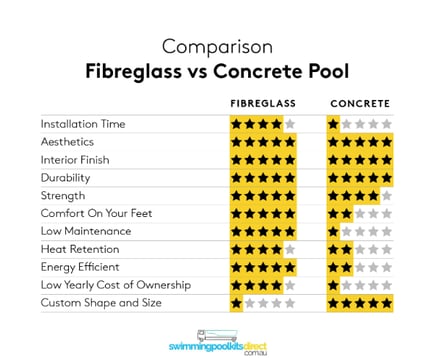
Is a fibreglass pool cheaper than a concrete pool?
Short answer, yes. In Australia, a fibreglass pool costs around $30,000-$40,000 including installation (and even cheaper if you install it yourself). A standard concrete pool of 7m x 4m costs roughly $65,000.
Costs involved in the maintenance of swimming pools:
| Concrete Pool Disadvantages | Fibreglass Pool Advantages |
| They need resurfacing every 10-15 years | With good care, they require refinishing after 20-30 years |
| Algae can be an issue due to the grout so more chemicals are needed | Gel coat prevents the growth of algae so the cost of chemicals is lower |
| Cost more to heat | Cheaper to heat and they retain the heat better than concrete |
| Long installation times so higher install cost | Fast installation times and lower install costs |
Pro Tip:
When it comes to lifespan and customisation, concrete pools are the winners. But if you’re looking for a more affordable option and less upkeep over time, then fibreglass pools are for you.
Pros and cons of concrete vs fibreglass pools
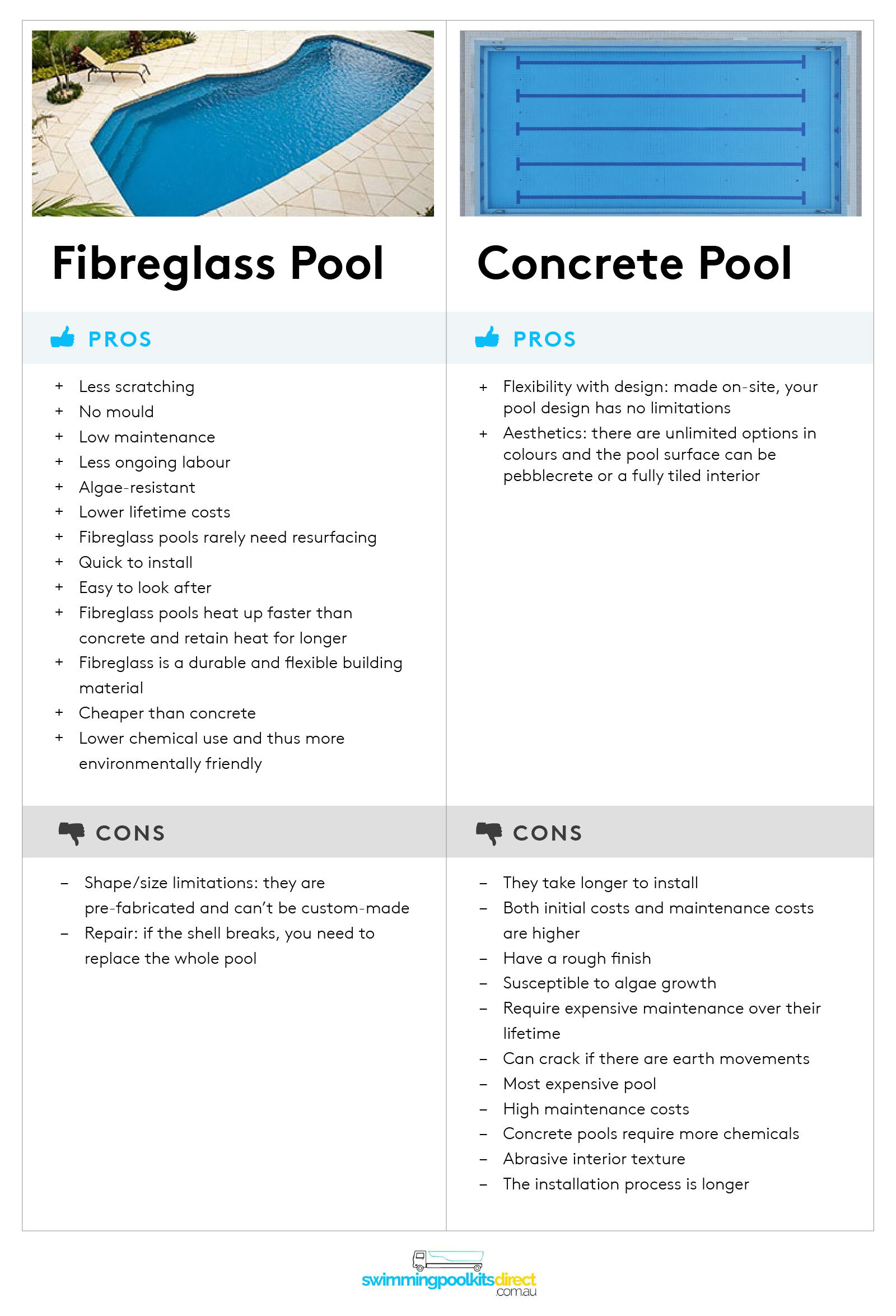
Which is better: A concrete or fibreglass pool?
As you will have seen, both a concrete pool and a fibreglass pool have their advantages and disadvantages. However, due to the list of advantages of fibreglass pools, there are now more being installed than concrete pools in Australia. As the cost of living is increasing, people are now more conscious than ever of not only the upfront cost of products but also the ongoing cost. A fibreglass pool represents excellent value from the outset. A fibreglass pool typically costs $20 000 less than a concrete pool and the ongoing costs are dramatically different. The non-porous nature of fibreglass results in reduced chemical usage, and when it comes to pool heating, its outstanding thermal efficiencies really set it apart.







